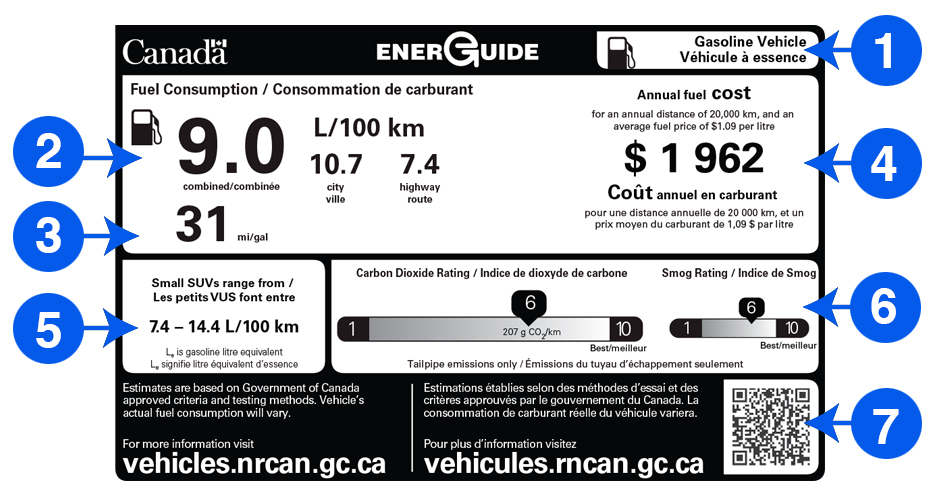EnerGuide vehicle fuel consumption label explained

No doubt you’ve seen those EnerGuide labels on appliances like dishwashers and heaters that explain their energy consumption. But did you know the Natural Resources Canada (NRCan) informational sticker is also placed on all new light-duty (passenger) vehicles soldin Canada, either found on its own or on a spec sheet listing model options and price?
This is an easy way to compare fuel efficiency between different cars, vans, trucks and SUVs to determine which one fits your needs. NRCan redesigned the sticker for 2016 and reflects the improved testing methodology introduced last year — the ministry moved from a two-cycle evaluation process to a five-cycle, factoring in additional variables like air conditioner usage, cold engine temperature operation and more.

Below is a key on how to read the revised EnerGuide label.
-
This box identifies the vehicle’s primary energy source, which in this case is gasoline
-
The biggest and easiest to read stat is the fuel consumption number, rated in liters per 100 kilometres (L/100 km), broken down into city driving, highway driving and a combination of both (55 per cent city and 45 highway)
-
For our American friends, the combined fuel consumption number represented in miles per gallon (MPG)
-
The dollar figure is the estimated annual cost of fuel for the particular vehicle based on the combined number from box two/three, a total of 20,000 km driven, and the fuel price listed above
-
A comparison of fuel consumption ratings of vehicles from the same segment
-
Tailpipe emissions, specifically carbon dioxide and smog, are detailed here on a sliding scale, the former measured in grams per km driven
-
Smartphone users can scan this QR code that will link them to a search tool on NRCan’s website to look up the fuel efficiency of vehicles sold in Canada from 1995 and onwards


